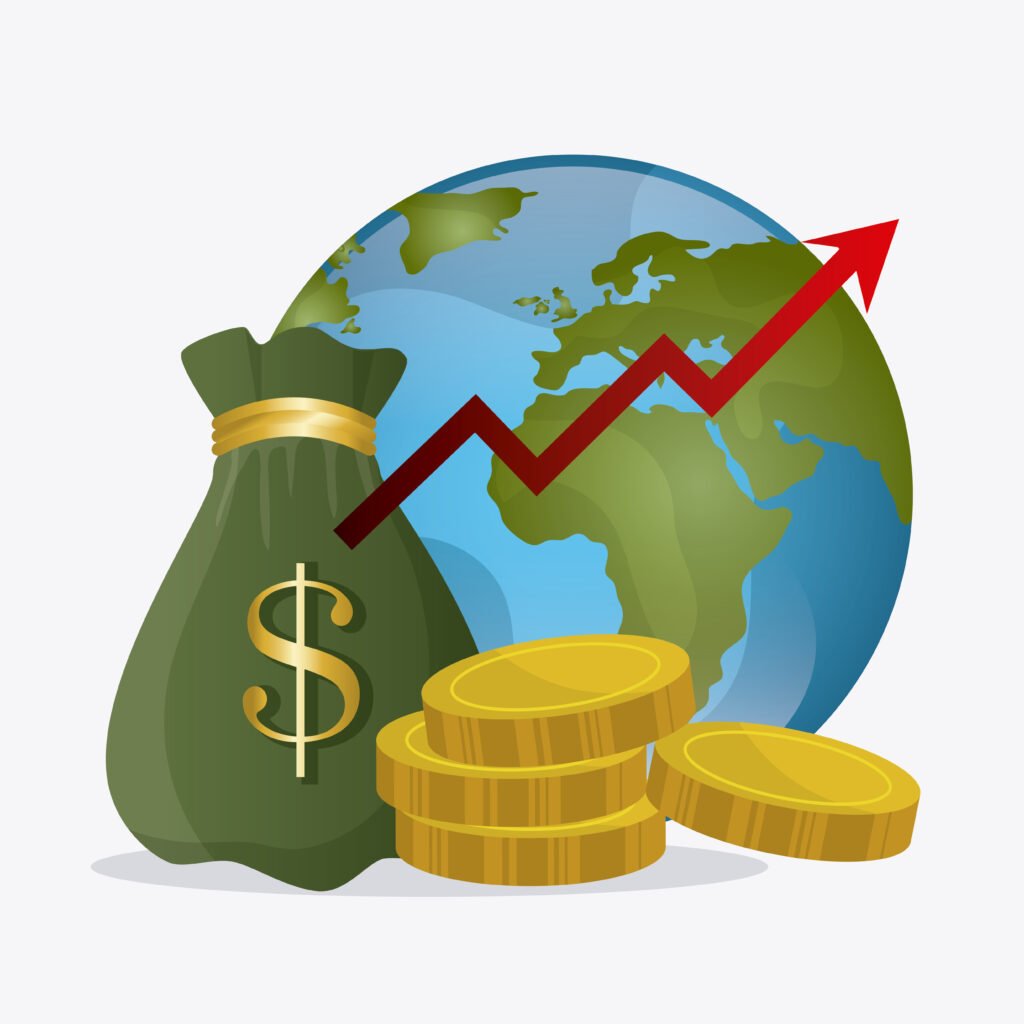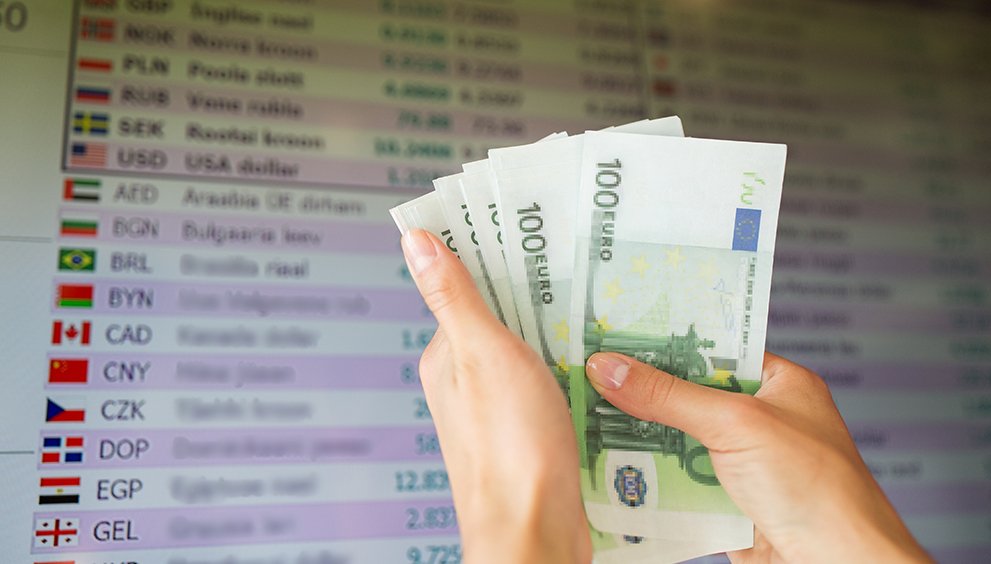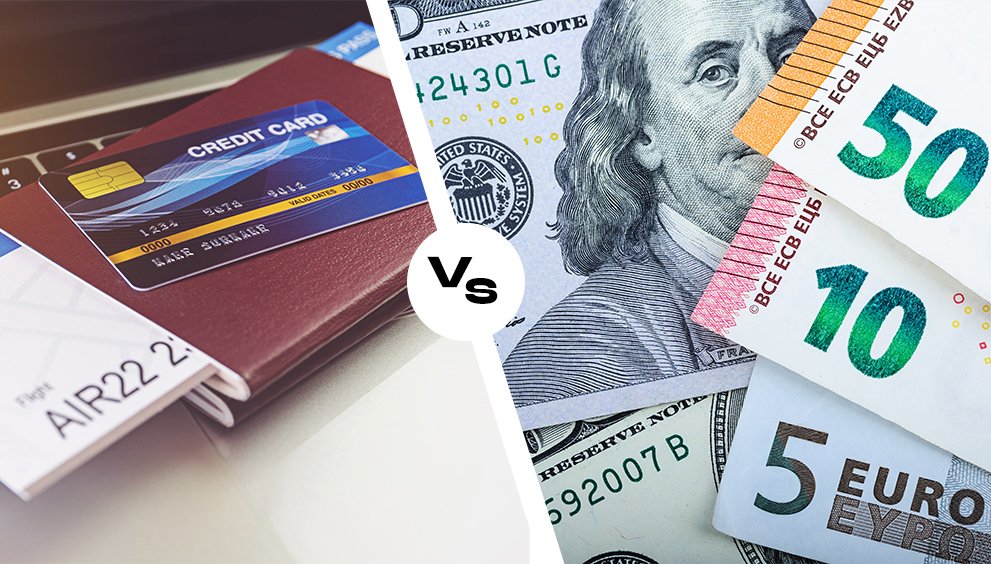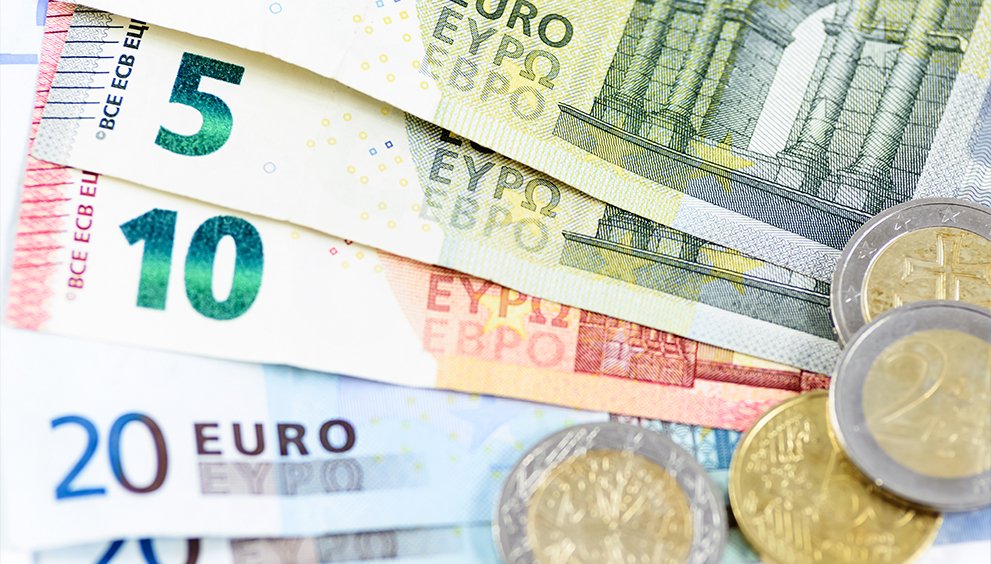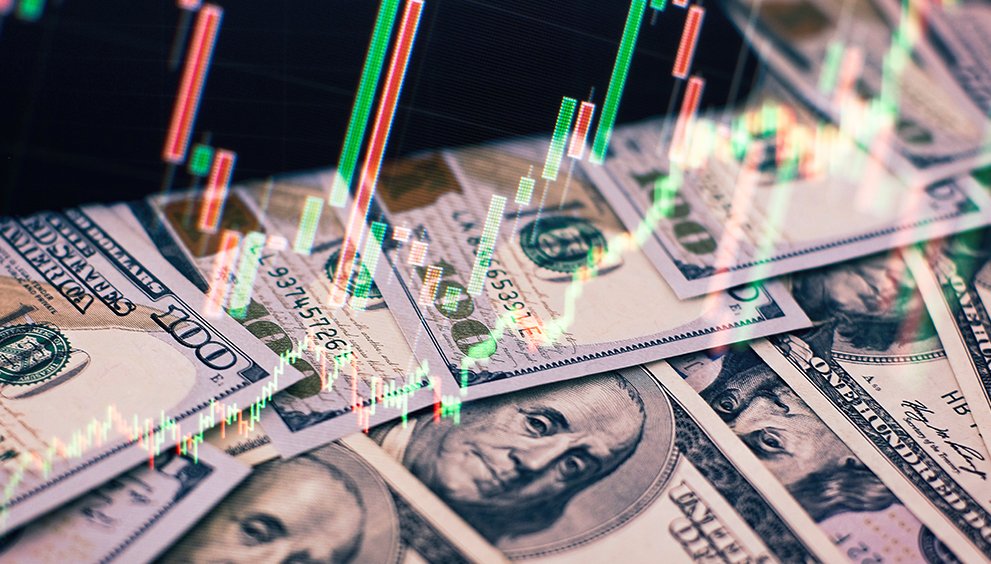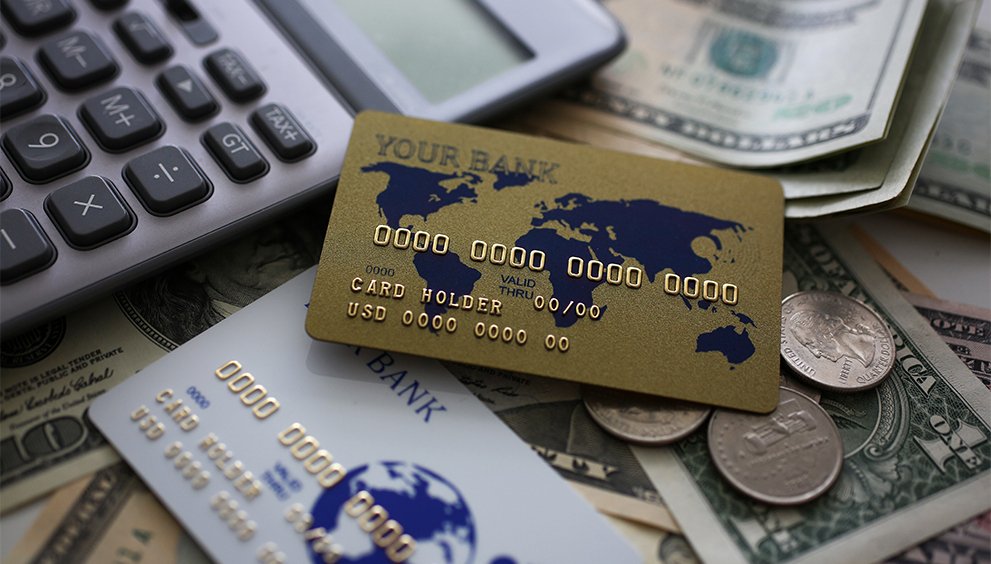The FOMC March 2025 Meeting: What To Expect From The Federal Reserve’s Interest Rate Decision?

While Trump’s tariffs manipulate market sentiment and currency exchange rates, this week will be an ultimate roller-coaster ride with the Fed’s interest rate decision!
Think of the global financial markets as a ship navigating stormy waters—every wave of economic data and policy decision threatens to change its course. On 18-19 March 2025, all eyes are on the U.S. Federal Reserve’s Federal Open Market Committee (FOMC) meeting, a crucial moment that could steer the forex market in new directions. But this isn’t just about interest rates and inflation. Two powerful forces are making the ride even rougher: President Trump’s aggressive tariff policies, rejuvenated since his return to office in January 2025, and Russia’s ongoing war in Ukraine, which continues to shake global stability. This article explores how the Fed’s next move, Trump’s trade strategy, and geopolitical turmoil could shape the forex market.
Economic Context: A Tightrope Walk Over a Stormy Abyss
As of mid-March 2025, the U.S. economy is a bit like a seasoned tightrope walker, balancing resilience and vulnerability with a crowd of global onlookers holding their breath. The federal funds rate sits at 4.25%-4.50%, chiselled into shape by four cautious 25-basis-point cuts in late 2024—a cumulative 100-basis-point easing aimed at taming inflation without derailing growth. Inflation, as measured by the Consumer Price Index (CPI), has cooled to 2.9% in February 2025, a welcome retreat from its 2022 peaks but still skimming its nose at the Fed’s sacred 2% target. Core Personal Consumption Expenditures (PCE) inflation, the Fed’s preferred yardstick, lingers at 2.6%, a persistent whisper of underlying price pressures that keeps policymakers awake at night. Meanwhile, GDP growth for Q4 2024 clocked in at a sprightly 2.5% annualised, buoyed by consumer spending and a labour market holding steady at 4.1% unemployment—a testament to the economy’s grit.
Yet, beneath this rosy facade, cracks are forming faster than you can say “recession watch.” The manufacturing Purchasing Managers’ Index (PMI) slumped to 48.5 in February 2025, flashing red for contraction in a sector that’s often a bellwether for global demand and trade disruptions. Retail sales growth, too, has lost its swagger, inching up a mere 1.8% year-over-year in January 2025, down from a more robust 3.2% in Q3 2024—a sign that consumers might be tightening their belts amid rising costs and nagging uncertainty. Across the Atlantic, the U.S. Dollar Index (DXY) has muscled its way to 106.50, its highest perch since mid-2023, as jittery investors flock to the greenback’s safe-haven appeal. And who can blame them? Trump’s tariff threats loom like storm clouds on the horizon, while Russia’s wars send shockwaves through energy and commodity markets, rattling supply chains from Houston to Hanoi. It’s a high-stakes balancing act for the Fed—curb inflation, nurture growth, and manage the dollar’s global heft—all while the world watches with bated breath.
Beyond these domestic indicators, external pressures are piling on like uninvited guests at a posh dinner party. Trump’s tariff proposals threaten to jack up import costs, potentially reigniting inflation just as it seemed to be cooling. Meanwhile, Russia’s ongoing conflicts—most notably its brutal slog in Ukraine—have driven volatility in energy and commodity markets, with Brent crude oil prices spiking and wheat costs soaring, squeezing budgets from Berlin to Bengaluru. These twin forces create a perfect storm for the Fed as it heads into its March rendezvous, demanding a deft hand to steer the ship through choppy waters without capsizing the whole enterprise.
The FOMC Meeting: A Powder Keg Packed with Possibilities
Analysts are betting the Fed will hold rates steady at 4.25%-4.50% during its 18-19 March 2025 meeting, with futures markets assigning a 90% probability to a no-change decision as of 17 March. It’s a safe call, echoing Fed Chair Jerome Powell’s measured tone on 7 March 2025: “The economy remains strong, and we have room to monitor developments, including inflationary risks from trade policies and geopolitical tensions.” But don’t let that calm surface fool you—this meeting is a potential powder keg for forex markets, where a single misstep could spark chaos or calm the waters. Here’s what to watch, from the rate decision to the tea leaves in Powell’s press conference.
Rate Decision: Steady Hands or a Surprise Jolt That Rocks the Boat?
A rate hold might sound as thrilling as watching paint dry, but in the forex world, it’s the nuance that packs a punch. If Powell strikes a hawkish note—Signalling vigilance on tariff-driven inflation or hinting at tighter policy down the road—the dollar could soar like a rocket, sending shockwaves through global currencies from the euro to the yuan. Conversely, a dovish surprise, perhaps a 25-basis-point cut or softer rhetoric acknowledging growth fears, might see the greenback stumble, giving risk assets a much-needed breather. History offers a stark reminder: in December 2018, Powell’s hawkish jawboning, despite a rate pause, sparked a 2% DXY surge in a mere week, catching markets off guard. Forex traders are on high alert, knowing that even a whiff of an unexpected policy shift could trigger a chain reaction across currency pairs.
Economic Forecasts: Crystal Ball or a Foggy Lens on the Horizon?
The FOMC’s updated Summary of Economic Projections (SEP), including its famed “dot plot” of rate expectations, will provide a Tantalising glimpse into the Fed’s 2025 outlook—a crystal ball for markets hungry for direction. In December 2024, the dot plot projected a year-end 2025 federal funds rate of 3.75%-4.00%, implying further cuts to ease the economy’s path. But with inflation proving stickier than a treacle pudding and new risks from tariffs and geopolitical instability muddying the waters, the median projection may shift upward to 4.00%-4.25%, reflecting a more cautious stance. Inflation forecasts, previously targeting a 2025 PCE rate of 2.5%, could be revised to 2.7% or higher, acknowledging the potential for tariff-related price pressures to keep the heat on. GDP growth pegged at 2.2% for 2025 in December, but it might be downgraded to 2.0% if trade tensions and global slowdown fears intensify—a sobering nod to the challenges ahead. These revisions aren’t just dry numbers; they’re rocket fuel for forex traders, shaping expectations for the Fed’s reaction function and influencing currency valuations in real-time.
Powell’s Press Conference: Words That Could Move Mountains—or Markets
Powell’s tone during the post-meeting press conference will be the main event, parsed like a cryptic oracle by traders and analysts alike. A neutral stance—acknowledging inflationary risks while preaching patience—may stabilise markets, keeping sharp forex moves at bay. But a hawkish jab, perhaps a stern warning on tariff-driven inflation or a nod to tighter policy, could propel the DXY toward 108.00 as investors price in higher U.S. yields and pile into the dollar. On the flip side, dovish language—say a spotlight on growth concerns or a downplaying of inflation fears—might see the DXY retreat to 104.50, easing pressure on major pairs like EUR/USD and USD/JPY and giving risk assets a lift. Powell’s ability to navigate these competing narratives will be crucial, especially given the heightened uncertainty surrounding trade and geopolitical developments. A misstep here could echo his 2015 “considerable time” flub, which sent markets into a tizzy—currency desks are on edge, and every syllable will count.
Broader Policy Considerations: Caught Between a Rock and a Hard Place
The Fed must also grapple with structural challenges beyond the immediate decision as external forces tighten the screws. Trump’s tariffs threaten to stoke inflation by raising import costs, potentially necessitating a tighter stance that could strengthen the dollar but risk slowing growth—a classic central banker’s conundrum. Meanwhile, Russia’s wars exacerbate supply chain disruptions and energy price volatility, adding external inflationary pressures that may limit the Fed’s room to ease policy without losing credibility on price stability. These dynamics create a policy dilemma that’s as tricky as threading a needle in a hurricane: tightening risks overcooling the economy, especially if global retaliation slows U.S. exports (already down 5% year-over-year in early 2025 projections) while easing risks undermining inflation control at a time when core PCE sits at 2.6% and services inflation, remains sticky at 3.2% year-over-year. It’s a vice grip of competing pressures, and the Fed’s March signals will set the tone for how it plans to navigate this treacherous terrain.
Trump’s Tariffs: A Trade War Gambit on Steroids with Global Reach
Since storming back into the White House on 20 January 2025, President Donald Trump has doubled down on his “America First” mantra, wielding tariffs like a sledgehammer to shrink the U.S. trade deficit—a whopping £640 billion in 2024—and revive domestic industries battered by decades of globalisation. It’s a bold gambit, some say reckless, aimed at rewriting the rules of international trade, but it’s shaking the global chessboard from Ottawa to Shanghai. Here’s a deep dive into the specifics of Trump’s tariff agenda, its economic ripples, and the geopolitical fallout as of 17 March 2025.
Tariff Proposals: A Sweeping Blueprint Targeting Friends and Foes Alike
Trump’s tariff playbook is as expansive as it is provocative, sparing no one in his quest for leverage and economic rebalancing:
- 25% on Canada and Mexico: These tariffs zero in on imports under the USMCA framework, particularly in the automotive and agricultural sectors. Canada supplies 13% of U.S. crude oil imports, while Mexico is a linchpin for auto manufacturing, with £80 billion in annual exports to the U.S.—a hefty target for Trump’s protectionist ire.
- 10%-20% on the European Union: From French wines and Italian handbags to German cars and industrial machinery, these tariffs aim to chip away at a £120 billion trade deficit with the EU in 2024. Rates vary by sector—20% on German autos, 10% on agricultural goods—reflecting a strategic mix of economic and political pressure.
- Up to 60% on China: The most aggressive measures target Chinese electronics, steel, and consumer goods, a direct assault on a £320 billion slice of the U.S. trade deficit in 2024, with electronics alone accounting for £110 billion of that imbalance. It’s a throwback to Trump’s first-term trade war, but this time with sharper teeth.
Implementation timelines remain fluid, a chess game of feints and counters. Some tariffs, like those on Canada and Mexico, are already in preliminary stages as of March 2025, with executive orders paving the way for phased rollouts. Others, particularly the China levies, await final Congressional approval—a legislative gauntlet that could stretch into Q2 2025. In the meantime, importers are stockpiling goods like it’s Y2K all over again, nudging prices higher before the hammer falls and adding early upward pressure on inflation metrics.
Economic Impacts: A Multi-Faceted Assault on Prices, Growth, and the Dollar
These tariffs aren’t just political theatre—they’re economic dynamite with far-reaching consequences for inflation, growth, and currency dynamics:
- Inflationary Pressures That Hit the High Street: Higher import costs translate directly into pricier goods for U.S. consumers and businesses alike. The Office for Budget Responsibility (OBR) estimates that a 25% tariff on North American imports could lift core PCE inflation by 0.5%-1% within 12 months, while a 60% tariff on China might add a bruising 1.5%-2%. Early signs are already here: U.S. import prices rose 2.3% year-over-year in January 2025, up from 1.8% in Q4 2024, driven in part by preemptive stockpiling. Industries reliant on imported inputs—think electronics manufacturers or carmakers assembling in Detroit—are facing higher production costs, which could cascade into broader price hikes across the high street, from smartphones to SUVs.
- Growth Risks and the Sting of Retaliation: Retaliation from trading partners looms like a gathering storm, threatening to dent U.S. economic growth. Canada is mulling a 10% levy on U.S. energy exports, which could disrupt £40 billion in annual trade and jack up energy costs for American consumers in states like Minnesota and Michigan. Mexico is eyeing tariffs on U.S. agricultural exports like corn and soybeans, worth £15 billion annually, a move that could hit farmers in the Midwest hard. Across the pond, the EU has warned of reciprocal measures targeting U.S. whiskey and motorcycles—echoing its 2018 playbook—potentially impacting £20 billion in American exports. China, meanwhile, has hinted at restricting rare earth exports, which are critical for U.S. tech and defence industries, and possibly devaluing the yuan to offset tariff pain. Oxford Economics projects a 0.3%-0.7% drag on U.S. GDP growth in 2025 under a moderate tariff scenario, with downside risks of 1%-1.5% in a full-scale trade war—a sobering outlook for an economy already showing signs of strain.
- Dollar Dynamics and the Yield Tug-of-War: The interplay between tariffs and Fed policy will significantly shape the U.S. dollar’s trajectory, creating a tug-of-war between inflationary and growth concerns. Higher inflation from tariffs could force the Fed toward a tighter stance, elevating U.S. Treasury yields—the 10-year note currently yields 4.3%, up from 4.1% in January 2025—and attracting capital inflows that strengthen the dollar. A hawkish Fed response might lift the DXY to 108.00 or higher, cementing the greenback’s safe-haven status. Conversely, if growth fears dominate—say, due to retaliatory tariffs or a global slowdown—the Fed might lean dovish, softening yields and weakening the USD, potentially dropping the DXY to 104.50. These dynamics will hinge on the Fed’s March signals and the pace of tariff implementation, with forex markets poised for a rollercoaster ride either way.
Geopolitical Fallout: Straining Alliances and Risking Escalation on a Global Scale
Beyond economics, Trump’s tariffs carry profound geopolitical consequences, risking tensions with allies and adversaries alike and potentially redrawing the contours of international relations:
- North American Relations Under Fire: Canada and Mexico have threatened to file disputes with the World Trade Organisation (WTO), arguing that the tariffs violate USMCA commitments and undermine regional integration. Canadian Prime Minister Justin Trudeau warned on 10 March 2025 that such measures “undermine decades of economic integration,” while Mexican officials have hinted at broader retaliatory tariffs on U.S. goods, from grains to machinery. The rhetoric is heating up, and what was once a harmonious trade pact now feels like a powder keg waiting for a spark.
- Transatlantic Tensions on the Rise: The EU has condemned the tariffs as “protectionist and shortsighted,” with European Commission President Ursula von der Leyen announcing on 12 March 2025 that the EU is preparing a “proportionate response” targeting £20 billion in U.S. exports—think Kentucky bourbon and Harley-Davidson bikes. This could strain U.S.-EU cooperation on other fronts, from climate policy to joint support for Ukraine against Russia’s aggression, at a time when transatlantic unity is more crucial than ever.
- U.S.-China Dynamics and the Spectre of a Currency War: The proposed 60% tariffs on China risk escalating into a broader trade war, with Beijing signalling readiness to play hardball. One option on the table is a yuan devaluation—currently at 7.20 to the USD—potentially by 5%-10%, which would make Chinese exports cheaper and blunt the tariffs’ impact. Another is a threatened sell-off of U.S. Treasuries; China holds £800 billion as of January 2025, and dumping them could spike U.S. borrowing costs and destabilise bond markets, though analysts debate Beijing’s willingness to incur self-inflicted losses by pulling such a trigger. More concerning is the potential for non-economic retaliation—cyber escalation, say, or increased military assertiveness in the South China Sea—that could ratchet up tensions far beyond trade. A Chinese yuan devaluation, meanwhile, could trigger competitive devaluations elsewhere, particularly among emerging markets reliant on export competitiveness, risking a currency war reminiscent of the 1994 yuan drop that sparked regional crises.
- Global Trade Architecture at Risk: The broader implications for the global trade system are stark. Trump’s tariffs challenge the WTO’s multilateral framework, emboldening other nations to adopt tit-for-tat measures and potentially fracturing the post-WWII trade order. Smaller economies caught in the crossfire may face disproportionate pain—think Vietnam or Malaysia, whose supply chains are intertwined with both U.S. and Chinese markets. The ripple effects could reshape alliances and trade blocs for years to come, with the U.S. risking isolation if it pushes too far.
Counterarguments and Domestic Support: The Case for Tariffs—or a Mirage?
Not everyone sees Trump’s tariffs as a Pandora’s box of economic woe. Proponents, including trade hawks like Peter Navarro, argue they’ll incentivise domestic production, create jobs, and reduce reliance on foreign supply chains—a lesson hammered home by pandemic-era disruptions that left U.S. shelves bare of critical goods like PPE and semiconductors. The U.S. steel industry, for instance, saw a 15% production increase following 2018 tariffs, a rare bright spot for American manufacturing. Supporters also point to national security benefits, arguing that tariffs on China curb Beijing’s economic leverage over the U.S., particularly in strategic sectors like tech and defence. But critics are quick to counter: those steel gains were short-lived, with downstream industries like construction and automotive bearing the brunt of higher costs and consumers ultimately footing the bill through pricier goods. The debate underscores the tariffs’ polarising nature—part economic experiment, part political statement—with no easy answers on whether the juice is worth the squeeze.
Russia’s Wars: A Global Economic Molotov Cocktail with Lasting Scars
Russia’s military conflicts, particularly its invasion of Ukraine grinding into its third year in 2025, alongside simmering tensions in regions like Georgia and Moldova, are nothing short of a geopolitical Molotov cocktail lobbed into the heart of global markets. These disruptions amplify inflationary pressures, shift capital flows, and reshape currency dynamics in ways that will intersect with the Fed’s March 2025 decisions, creating a volatile backdrop for monetary policy. Below is an expanded analysis of these impacts as of 17 March 2025, capturing the breadth of economic and forex fallout.
Energy and Commodity Market Disruptions: Supply Shocks That Sting
Russia’s wars have upended global supply chains with the precision of a wrecking ball, particularly in energy and agricultural commodities, sending prices soaring and squeezing economies worldwide:
- Energy Prices on a Tear: Brent crude oil prices have climbed to £56 per barrel, a 10% jump since January 2025, driven by tightened Western sanctions and reduced Russian output amid the conflict. Russia supplies 10% of global oil, and disruptions—combined with OPEC+ production cuts—have squeezed supply, keeping markets on edge. In Europe, natural gas prices remain elevated at £40 per MWh, down from the dizzying peaks of 2022 but still double pre-war levels, exacerbating cost-of-living pressures across the eurozone. U.S. consumers aren’t immune either, with petrol prices averaging £2.80 per gallon in March 2025, up 15% from late 2024—a pinch felt at pumps from California to the Carolinas.
- Commodity Markets in Turmoil: Russia and Ukraine together account for 25% of global wheat exports, 20% of corn, and 60% of sunflower oil—a lifeline for food security in regions like the Middle East and Africa. Ongoing fighting in Ukraine’s Black Sea ports has slashed exports, pushing wheat prices to £220 per tonne, a 30% rise since January 2025. Fertiliser markets are similarly strained, with Russia supplying 15% of global potash; sanctions have driven prices up 25% in 2025, raising costs for farmers from Iowa to India and fueling food inflation worldwide. The FAO reports global food prices are up 8% year-over-year, a slow burn that’s stoking unrest in vulnerable economies like Egypt and Nigeria.
- Supply Chain Dominoes: Beyond energy and food, Russia’s role in metals like nickel and palladium—key for batteries and catalytic converters—adds another layer of disruption. Prices for these commodities have risen 20% since January 2025, hitting industries like automotive manufacturing hard and feeding into broader inflationary pressures that keep central bankers up at night.
Sanctions, Capital Flows, and Safe-Haven Dynamics: Fear Fuels the Flight to Safety
Western sanctions on Russia intensified in February 2025, have deepened Moscow’s economic isolation, with £240 billion in Russian central bank assets frozen across G7 nations—a financial body blow that’s weakened the Russian rouble to 105 against the dollar, down 10% since January 2025. The rouble’s slide reflects reduced energy revenues and restricted access to dollar-based financing, though Russia has mitigated some pain by redirecting oil exports to India and China—up 20% and 15%, respectively, in 2024—while boosting yuan-denominated transactions by 25% over the same period.
Globally, the war has spurred safe-haven flows into the U.S. dollar and Swiss franc (CHF) as investors seek shelter from the storm. The DXY’s rise to 106.50 partly reflects this risk-off sentiment, as does the Swiss franc’s 3% gain against the dollar since January—USD/CHF now sits at 0.8900, a haven for those fleeing uncertainty. Gold prices, another barometer of fear, have hit £1,900 per ounce, a 5% increase in 2025, underscoring the pervasive unease that’s driving capital away from riskier assets and into the arms of perceived safety.
Forex Effects: A Currency Landscape Redrawn by Conflict
Russia’s wars are rewriting forex playbooks across multiple dimensions, with distinct effects on major pairs, emerging markets, and safe-haven assets:
- Russian Rouble (RUB) on the Ropes: The rouble faces structural downward pressure as Russia funds its war effort—estimated at £80 billion annually—through dwindling reserves and domestic borrowing. Analysts project USD/RUB could breach 110 by mid-2025 if energy revenues falter further, say due to stricter EU import bans or a global recession curbing demand. However, Russia’s pivot to non-Western trade partners—India and China now account for 50% of its oil exports—may cap the decline, providing a fragile buffer against total collapse. Still, the rouble’s path looks grim, with sanctions and war costs casting long shadows.
- Euro (EUR) Under Siege: The eurozone’s proximity to the conflict and lingering reliance on Russian energy—still 15% of gas imports despite diversification efforts—continue to weaken the euro. EUR/USD, at 1.0850 as of 17 March, could slide to 1.0600 if the Fed adopts a hawkish stance while the European Central Bank (ECB), with rates at 3%, remains constrained by recession fears—eurozone GDP growth is projected at a measly 0.8% for Q1 2025. Germany, the bloc’s economic engine, is particularly vulnerable, with industrial output down 2% year-over-year due to sky-high energy costs, a drag that’s sapping the euro’s strength.
- Safe-Haven Currencies (JPY, CHF) Shine Bright: The Japanese yen and Swiss franc benefit from risk-off flows as investors flee uncertainty. USD/JPY, at 153.80, could dip to 150.00 if Russia escalates—say, through renewed nuclear sabre-rattling, as occurred in early March 2025—or if global growth fears intensify. The yen’s appeal is tempered by Japan’s ultra-low rates (0.25%) and carry trade dynamics, but safe-haven demand may dominate in a crisis. The Swiss franc, less constrained by policy divergence, could see USD/CHF fall to 0.8700 on heightened risk aversion, as Switzerland’s neutrality and strong fundamentals attract jittery capital.
- Commodity Currencies Feel the Squeeze: The Canadian dollar (CAD) and Australian dollar (AUD) face headwinds from war-induced volatility. USD/CAD, at 1.3800, may climb to 1.4200 if oil price gains (£56/barrel Brent) are offset by Trump’s tariffs on Canada, which exports 75% of its goods to the U.S. AUD/USD, at 0.6500, risks falling to 0.6300 as Australia’s export-heavy economy—40% of exports go to China—suffers from China’s tariff retaliation and a potential slowdown in global demand.
Broader Economic Risks: A Slow Burn with Global Reach
Beyond immediate market effects, Russia’s wars pose structural risks to global stability that could linger for years. Food and energy inflation disproportionately hit emerging markets, where staples consume a larger share of household budgets—Egypt and Turkey, for instance, have seen bread prices rise 40% since 2024, fueling social unrest and political instability. In developed economies, higher input costs threaten corporate margins, potentially crimping investment and growth—U.S. manufacturers report a 15% rise in production costs since January 2025, a burden that could dampen capex plans. The International Monetary Fund (IMF) warns that a prolonged Ukraine conflict could shave 0.5%-1% off global GDP in 2025, with worse outcomes if NATO-Russia tensions escalate militarily—a scenario that, while unlikely, hangs over markets like a dark cloud.
Forex Market Reactions: A Currency Crucible Forged in Uncertainty
The forex market is a cauldron as of 17 March 2025, simmering with tension as it awaits the FOMC’s signals—signals that Trump’s tariffs and Russia’s wars will amplify into either chaos or calm. Below is a detailed breakdown of how key currencies might respond to various Fed outcomes, grounded in current levels and market dynamics, with an eye on the interplay of domestic policy and global shocks.
U.S. Dollar (USD): The Kingpin Under Scrutiny
- Hawkish Fed Scenario: If the Fed pauses rates and signals concern over tariff- and war-driven inflation—projecting PCE at 2.7%-3%—the DXY could rocket to 108.00. Higher U.S. yields say 10-year Treasuries at 4.5%, would draw capital inflows, pressuring EUR/USD to 1.0700 and lifting USD/JPY to 155.00 as investors pile into the greenback’s safe-haven allure.
- Dovish Fed Scenario: If the Fed hints at easing to counter growth risks—perhaps revising 2025 GDP down to 1.8%—the DXY might slip to 104.50. This would lift EUR/USD to 1.1000 and pull USD/JPY to 150.00, reflecting reduced yield differentials and a flicker of risk-on sentiment in global markets.
- Current Levels (17 March 2025): EUR/USD at 1.0850, USD/JPY at 153.80, DXY at 106.50—levels that reflect a market on tenterhooks, awaiting the Fed’s next move.
Major Pairs: A Transatlantic Tug-of-War and Beyond
- EUR/USD: With the ECB’s deposit rate at 3% and eurozone growth lagging, the euro struggles against a potentially hawkish Fed. A tightening signal could push EUR/USD to 1.0600, testing 2024 lows, as Europe’s war-related woes and energy dependency weigh heavy. A dovish Fed, however, might lift it to 1.1000, though geopolitical risks cap any runaway gains.
- GBP/USD: The Bank of England’s 4% rate and relative insulation from Ukraine’s fallout provide a modicum of resilience for sterling. GBP/USD, at 1.3100, may hold above 1.2900 unless the USD surges sharply on hawkish Fed rhetoric—a scenario that would test the pound’s mettle against the dollar’s safe-haven pull.
- USD/JPY: Japan’s ultra-low 0.25% rate keeps the yen on the back foot, vulnerable to carry trade dynamics, but war fears could limit the upside. A hawkish Fed might push USD/JPY to 156.00, reflecting wider yield gaps; a dovish surprise could see it retreat to 150.00 as risk-off flows bolster the yen’s safe-haven appeal.
Emerging Markets: Caught in the Crossfire
- Mexican Peso (USD/MXN): Trump’s 25% tariffs have already pressured the peso, with USD/MXN at 19.80. A hawkish Fed could drive it to 20.50, especially if Mexico retaliates and growth slows—2025 GDP forecasts are a tepid 1.5%, a far cry from pre-COVID highs.
- Chinese Yuan (USD/CNY): At 7.20, the yuan faces devaluation risks if China counters tariffs with a weaker currency—a 5% drop could push USD/CNY to 7.50. Beijing may hold steady to avoid capital flight, as seen in 2015’s mini-crisis, but the temptation to retaliate looms large.
- Russian Rouble (USD/RUB): At 105, the rouble risks sliding past 110 if sanctions tighten further or oil prices falter—war and isolation are a brutal combo. Trade reorientation to Asia provides some support, but downside risks dominate the outlook.
Safe Havens: The Flight to Quality in Full Swing
- Japanese Yen (JPY): USD/JPY may dip to 150.00 if risk-off flows intensify—say, via Russian escalation or global growth fears—though Japan’s dovish policy limits gains. Safe-haven demand could still trump yield differentials in a crisis.
- Swiss Franc (CHF): USD/CHF, at 0.8900, could fall to 0.8700 on safe-haven demand, as Switzerland’s neutrality and strong fundamentals attract investors fleeing the storm—a classic flight-to-quality play.
Commodity Currencies: Caught Between Oil and Tariffs
- Canadian Dollar (USD/CAD): At 1.3800, USD/CAD may rise to 1.4200 if tariffs outweigh oil price gains (£56/barrel Brent). Canada’s export reliance on the U.S.—75% of its total—heightens vulnerability to Trump’s trade salvos.
- Australian Dollar (AUD/USD): At 0.6500, AUD/USD risks slipping to 0.6300 as China’s tariff retaliation and global slowdown fears weigh on Australia’s export-driven economy—2025 GDP growth is pegged at a lacklustre 1.8%.
The Fed’s Policy Dilemma: Damned If They Do, Damned If They Don’t
The Fed faces a multifaceted policy challenge at its March 2025 meeting, with competing pressures squeezing its decision-making calculus tighter than a vice:
- Hawkish Pressure: Tariffs and war-driven commodity spikes—oil at £56/barrel, wheat at £220/tonne—could push PCE inflation to 2.7%-3%, necessitating tighter policy and a stronger USD, potentially lifting the DXY to 108.00. But tightening risks, however, cooling the economy, especially if global retaliation slows U.S. exports—already down 5% year-over-year in early 2025 projections—a delicate dance for Powell and crew.
- Dovish Risks: Growth threats from trade disruptions and a potential global slowdown—IMF projecting 2.5% global GDP growth for 2025—might argue for rate cuts, softening the dollar (DXY to 104.50) but risking inflation credibility. Core PCE at 2.6% and sticky services inflation (up 3.2% year-over-year) limit easing room, lest the Fed lose its hard-won anti-inflation street cred.
- Balancing Act: Powell’s 7 March remarks—“we’ll monitor incoming data closely”—suggest a cautious approach, but updated forecasts—possibly 2.5%-2.7% PCE and 2.0% GDP for 2025—will clarify intentions. Markets expect volatility, with the VIX at 18 poised to spike to 22 or higher post-FOMC if Powell’s signals surprise on either end. Currency traders, already on edge, will parse every word for directional cues, knowing the stakes couldn’t be higher.
Conclusion: A Forex Tempest Looms on the Horizon
The 18-19 March 2025 FOMC meeting is a make-or-break moment for forex markets, with Trump’s tariffs and Russia’s wars fanning the flames of an already fraught landscape. A likely rate hold suggests short-term USD strength—potentially lifting the DXY to 108.00—but the Fed’s navigation of inflationary tariffs and war-induced disruptions will dictate longer-term trends. Hawkish signals could propel the dollar, hammering emerging markets (USD/MXN to 20.50, USD/CNY to 7.50) and commodity currencies (AUD/USD to 0.6300), while dovish hints might ease USD pressure, raising risk assets (EUR/USD to 1.1000). Geopolitical risks—from trade wars to actual wars—ensure heightened volatility, with the VIX’s potential spike underscoring market unease. As of 17 March 2025, the forex market braces for a defining clash in an increasingly fractured world, where clarity from the Fed will be more critical than ever. The question isn’t just what the Fed will do—it’s whether the world can withstand the aftershocks.


 English
English 
